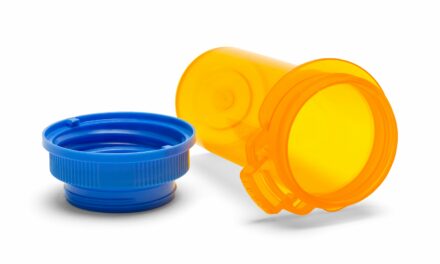Sleep specialists share practical tips on choosing medications that treat narcolepsy symptoms, including excessive daytime sleepiness and cataplexy.
By Risa Kerslake, BSN-RN
With the variety of pharmacotherapies now on the market and the differences in patients’ symptoms and treatment goals, sleep specialists have the challenge of navigating the treatment landscape to improve the lives of those with type 1 narcolepsy (formerly known as narcolepsy with cataplexy).
It’s not necessarily a dilemma in choosing the most helpful medication as it is a matter of clinician knowledge about these medications and their appropriate use, says neurologist-sleep specialist Michael J. Thorpy, MD.
Three Forms of Oxybate
According to Thorpy, the first-line treatment for type 1 narcolepsy is oxybate, of which sleep specialists choose from three forms: known in the United States by the brand names of Xyrem, Xywav, and Lumryz. Xyrem (sodium oxybate), marketed by Jazz Pharmaceuticals, is a twice-nightly formulation that received US Food and Drug Administration (FDA) approval in 2002 In 2020, the FDA approved Xywav (calcium, magnesium, potassium, and sodium oxybates), an oxybate option with low sodium, also marketed by Jazz Pharmaceuticals and also dosed twice nightly. A once-nightly sodium oxybate formulation, Lumryz, marketed by Avadel Pharmaceuticals, was FDA approved in 2023.
“We prioritized the development of low-sodium Xywav given feedback from [clinicians], patients, and the FDA, recognizing the benefits of reducing sodium in a chronic medication, which will be clinically meaningful in reducing cardiovascular morbidities,” says Jed Black, MD, senior vice president of sleep and central nervous system (CNS) medicine at Jazz Pharmaceuticals.
Because Xyrem, Xywav, and Lumryz carry a boxed warning as a CNS depressant and have the potential for abuse, they’re only available through a restricted program under a risk evaluation and mitigation strategy (REMS).
“As a result of Avadel’s ongoing efforts to educate sleep specialists and clinicians on the benefits of Lumryz for those with narcolepsy, nearly 1,800 health care providers have completed the Lumryz REMS certification process since [its] launch, including both experienced oxybate prescribers as well as providers who have never previously prescribed an oxybate,” says Jennifer Gudeman, PharmD, senior vice president of medical and clinical affairs at Avadel.
More Options to Treat Cataplexy
Narcolepsy drug Wakix (pitolisant), marketed by Harmony Biosciences, works through the histamine system. It’s taken once in the morning upon waking. It was FDA approved in 2019 for the narcolepsy symptom of excessive daytime sleepiness. In 2020, based on the results from the HARMONY CTP and HARMONY 1 randomized controlled trials, the FDA agreed that the drug shows a statistically significant reduction in the rate of cataplexy compared to placebo, and a cataplexy indication was officially added. Unlike oxybate drugs, Wakix is not scheduled as a controlled substance by the US Drug Enforcement Administration.
These four options—Xyrem, Xywav, Lumryz, and Wakix—are the only drugs that have an FDA indication for lessening cataplexy attacks in people with narcolepsy.
Off-label, some physicians prescribe antidepressants to treat cataplexy, perhaps due to antidepressants’ accessibility and ease with third-party payors. There is mixed evidence on whether antidepressants are efficacious in treating cataplexy in type 1 narcolepsy.
Over-Prescribing of Third-Line Narcolepsy Treatments
Though stimulants do not purport to treat cataplexy, some people with type 1 narcolepsy are prescribed only stimulants to manage their sleep disorder, leaving them with no pharmacological alleviation of any symptom other than excessive daytime sleepiness.
By contrast, stimulants should be third-line narcolepsy treatments only, whereas newer options that treat specific symptoms of narcolepsy, such as cataplexy, have a better safety profile, according to Thorpy.
Neurologist-sleep specialist Matthew Davis, MD, also says he sees people with narcolepsy unnecessarily prescribed high doses of stimulants. “People who don’t have as much experience are still using Adderall and Ritalin aggressively, which I rarely, if ever, use,” Davis says. “Those medicines are a very old-fashioned way of treating this.
“I’ll see people on massive doses of Adderall, yet no one has ever offered them an oxybate option….That doesn’t make sense to me.”
Thorpy says, “Traditional stimulants are frequently used, but unfortunately, I think that the potential for adverse effects is much greater with the traditional stimulants.”
Pediatrics Narcolepsy Drugs
Some newer drugs are not FDA approved for children, keeping traditional stimulants at the forefront of pediatric therapy in the United States, along with oxybates, says Sally Ibrahim, MD, a pediatric and adult sleep specialist at University Hospitals.
Xyrem and Xywav are FDA approved for children aged 7 and up. Lumryz may not be far behind. “The FDA recently accepted Avadel’s supplemental NDA [new drug application] for Lumryz in the pediatric population, which, if approved, will allow us to bring Lumryz to eligible children living with narcolepsy,” Gudeman says.
Wakix received its first approval in adolescents and children aged 6 years and older for the treatment of narcolepsy with or without cataplexy in the European Union in 2023. Harmony Biosciences is pursuing the addition of a supplementary pediatric indication for Wakix in the United States.
Impact of Insurance Barriers on Narcolepsy Prescriptions
But insurance barriers continue to play a major role in prescribing drugs for type 1 narcolepsy.
“Oxybates work great, but there are hurdles with prescribing controlled substances. And when we also have to do the added paperwork for each drug, not knowing which will get covered, it gets challenging,” Ibrahim says.
As with the oxybates, getting Wakix approved can be a challenge, despite it being the only approved medication that is not a controlled substance. But it’s worth the effort—it has very good efficacy data for cataplexy, Davis says.
Since the cost of medications can be a burden on patients, despite the extra monitoring that comes with prescribing sodium oxybate, a generic version might be a cheaper option for patients with financial concerns. Hikma Pharmaceuticals has 180 days of marketing exclusivity for its generic version of Xyrem.
Insurance barriers are also a reason US-based organizations haven’t published an equivalent to the European narcolepsy guidelines published in 2021, which provide algorithms for navigating pharmacological treatments.
While some clinicians lament the absence of straightforward narcolepsy drug clinical guidelines in the United States, others say an algorithm isn’t ideal because patient preferences need to be taken into account, along with any existing comorbidities. (Not to mention the frequently changing therapy landscape; new entrant Lumryz is not even included in the European guidelines.)
“Narcolepsy is a lifetime disease. It’s important to develop that long-term relationship with any patient that you’re going to be prescribing these kinds of medications,” said Randall Wright, MD, a sleep specialist at Houston Methodist.
Tips for Personalized Prescribing
Personalized dosing allows clinicians to adjust dosing based on discussions with their patients to accommodate any unforeseen schedule changes, such as staying up later, waking up earlier, or checking on children during the night, Black says. “[Clinicians and patients] appreciate individualized dosing regimens in narcolepsy, which is clinically useful based on each patient’s response and personal preference.”
Ibrahim has been adjusting her practice to not proceed with treatment until she understands a patient’s goals. “We can’t assume [that goal] is just daytime wakefulness or to resolve cataplexy,” she says.
Wright ideally uses Xyrem or its generic if his patient reports fragmented nighttime sleep or cataplexy as the primary symptoms. However, if daytime sleepiness is the main concern, he’s more likely to prescribe a stimulant, Wakix, or even an amphetamine. “It’s all about giving them the biggest bang for their buck with the least number of pills,” he says.
Once-nightly oxybate dosing, available via Lumryz, is attractive for patients who require a parent or other caregiver to administer medication at night, says Ibrahim. Reducing the burden of a second nighttime dose is important to consider for families.
Plus, “once-at-bedtime dosing of Lumryz eliminates the potential for that second dose to be taken too early, too late, or completely missed,” Gudeman adds.
Whereas oxybates treat all symptoms of narcolepsy, Wakix doesn’t treat disturbed nighttime sleep, Thorpy says. It treats daytime sleepiness and cataplexy only. If a patient doesn’t have nighttime sleep concerns but struggles with sleepiness and cataplexy, they may prefer to take Wakix.
Unfortunately, there are no clinical trials that compare Xyrem, Xywav, Wakix, or Lumryz for the alleviation of cataplexy.
Cardiovascular Considerations
Davis believes that, with the emergence of the low-sodium option Xywav and the once-nightly dosing of Lumryz, Xyrem or its generic version no longer offer a clear benefit for most patients.
Added salt content is a consideration. Virtually all of Davis’ patients who were taking Xyrem have switched to Xywav because they contain the same active ingredient and dosing structure. (Xywav has 92% less sodium than sodium oxybate.) Results from the 2023 TENOR study showed similar efficacy and patient tolerability when switching to Xywav.
This is especially important for older patients, particularly if they have cardiovascular or renal problems. “They may prefer to take Xywav even if they have to wake up at night, since they may be waking frequently anyway,” Thorpy says.
Many patients, especially younger ones, should be able to tolerate the amount of sodium in sodium oxybate, according to Thorpy. Xyrem and Lumryz both contain the same amount of sodium, regardless of twice- or once-nightly dosing. A fast-food double cheeseburger contains roughly the same amount. Most people can handle that, he says.
While younger patients overall shouldn’t have a problem with the extra sodium, there’s a question about whether narcolepsy patients have an increased predisposition to cardiovascular disease. There’s some evidence pointing to the loss of the neuropeptide orexin in narcolepsy patients having cardiovascular consequences. Some clinicians are hesitant to put a patient on sodium oxybate even in the absence of a cardiovascular problem, Thorpy says.
“Often it’s a matter of educating the patient [on their sodium intake]. There’s no point in advising twice-nightly sodium oxybate if the patient finds they can’t wake up to take the second dose, or they’re sleeping through to the morning and they’re not effectively treated,” Thorpy says.
Younger patients may opt to take once-nightly Lumryz despite the elevated sodium levels. “[They] tend to have deeper sleep, which can make it more difficult for them to wake up in the middle of the night to take a second dose of either Xyrem or Xywav,” Thorpy says.
“Patients with narcolepsy are best managed when clinicians put a system into place to incorporate a multi-modality approach to treating patients with sleep conditions,” Wright says.
If a narcolepsy patient has cardiovascular comorbidities, ideally, there’s already a cardiologist managing that aspect. It might mean connecting a patient with a weight management program if excess body weight is a concern.
“It’s really operating, helping, and practicing in a team approach for the patient,” Wright says.
Illustration 252543487 © Alexey Yaremenko | Dreamstime.com





